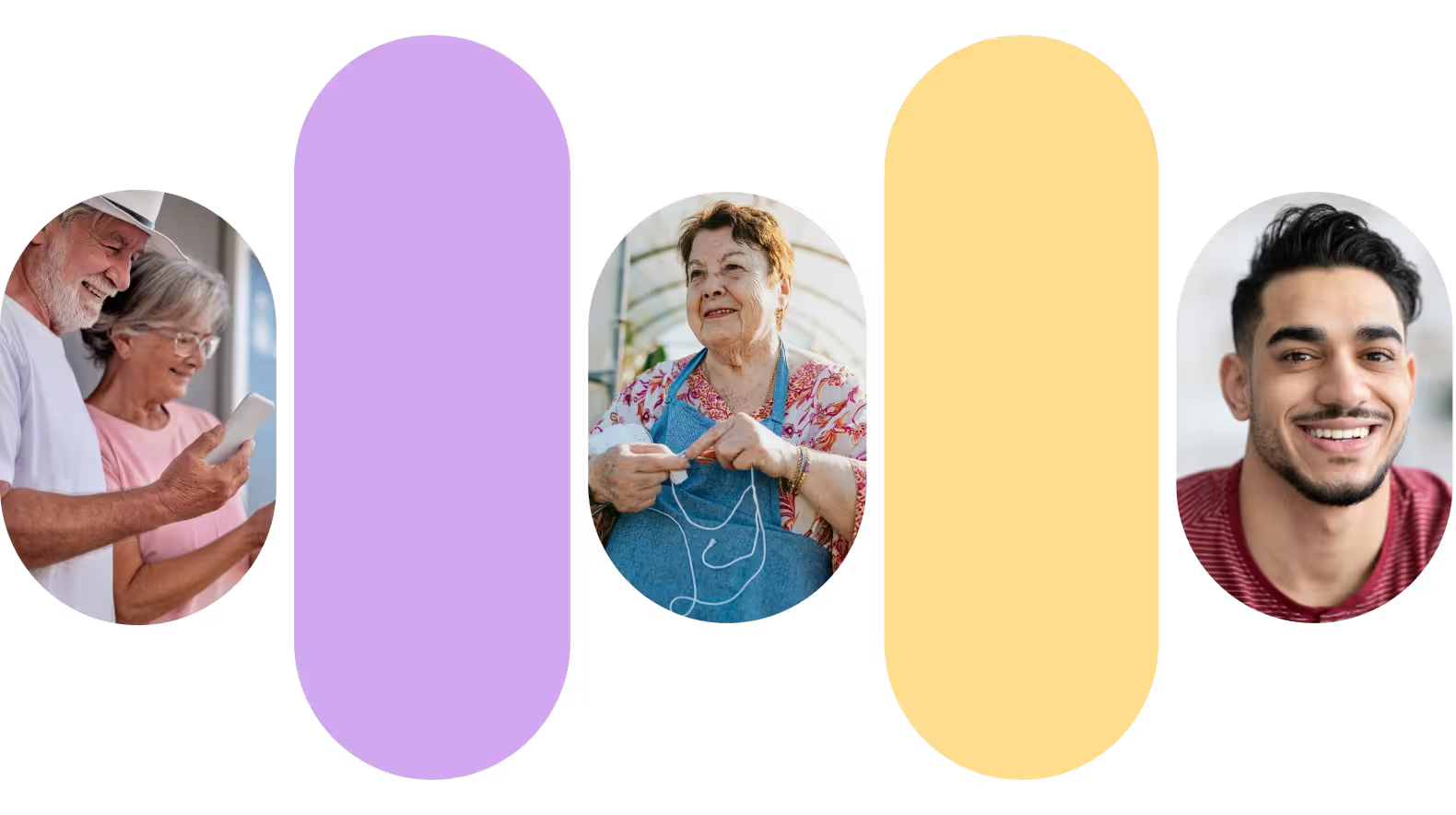The Impact of Hearing Loss on Relationship: Challenges and Solutions
Hearing loss can lead to relationship challenges, communication difficulties, frustration, and misunderstandings. Click here to read more!

According to the National Institute on Deafness and Other Communication Disorders (NIDCD), nearly 15% of American adults report some trouble hearing, and this number grows significantly as we age.
In reality, the number is likely even higher, as millions of people with hearing loss do not identify themselves as having it. Despite its prevalence, hearing loss often goes unaddressed.
Despite how common hearing loss is, it often goes unaddressed. Why? Many struggle to accept it, find proper care financially out of reach, or lack clear guidance on what to do next. Some dismiss it as a natural part of aging, unaware of the profound impact it can have on their quality of life.
The Impact of Hearing Loss on Relationships
Untreated hearing loss can profoundly impact not only the individual but also their relationships. It often leads to misunderstandings, repeated frustrations, and a growing sense of isolation for everyone involved.
While one person may struggle to hear and communicate effectively, the other may feel neglected or burdened by the constant need to repeat or adapt. Living with someone who can’t hear can be frustrating, especially when they are unaware of the problem. There’s a lot of listening fatigue and even resentment.
Over time, these challenges can put even the closest bonds to the test. That’s why it’s so important to raise awareness and explore practical strategies to improve communication and rebuild those connections.
Early Signs of Hearing Loss
On average, it takes people about 7 to 10 years from noticing the first signs of hearing loss to seeking help. Unfortunately, this delay can worsen communication challenges, create emotional strain, and lead to missed opportunities for early intervention.
Recognizing the early signs is key to addressing hearing loss before it significantly impacts your relationships.
Some common signs to watch for include:
- Frequently missing words in conversations.
- Misunderstandings that disrupt communication.
- A need for constant repetition, leading to frustration for both parties.
- Social withdrawal or avoidance of group settings.
- Feelings of loneliness or disconnection.
- Perceived withdrawal mistaken for disinterest or aloofness.
- Feelings of shame or embarrassment about struggling to hear.
Recognizing these signs early can help address hearing loss before it significantly impacts communication and relationships.
How to Respond When Others Bring Up Your Hearing
Hearing loss often creates pressure within couples and social relationships. It’s often a partner, close friend, or family member who first notices and encourages action.
If Your Partner or Loved One Isn’t Hearing Well
Choose a quiet, distraction-free setting and a time when both of you are relaxed and open to talking. Approach the conversation with care, using a compassionate tone, and be patient. Remember, this discussion might not result in a solution immediately—it may take multiple conversations to move forward.
Beforehand, take some time to learn about hearing loss so you can better understand its effects. During the conversation, gently discuss how untreated hearing loss can impact daily life and relationships. Present a supportive course of action, such as scheduling a visit to an audiologist and taking a hearing test, to address the issue together.
If Your Partner or Loved One Says You Aren’t Hearing Well
When a loved one brings up your hearing, it can feel sensitive, but it’s important to remember that they most likely want to help and have your best interest heart.
Approach the conversation with an open mind, and if you feel comfortable, share your thoughts and feelings. This can be a chance to discuss solutions together, such as scheduling a hearing test or exploring tools to improve communication.
Starting the conversation is an important first step toward better hearing and stronger relationships with those who care about you.
How Nagish Can Help
Hearing loss is incredibly common and nothing to be ashamed of. In fact, modern solutions—like hearing aids and assistive technology such as Nagish—make it easier than ever to enhance communication and improve your quality of life.
Nagish is a real-time captioning and live transcription app designed to empower individuals with hearing loss to navigate the world with ease and confidence. With a range of features, it makes communication more accessible and seamless.
Here’s how Nagish can help:
- Real-Time Transcription: Instantly converts phone calls and conversations into text so you never miss a word.
- Privacy: Keeps your conversations secure and confidential.
- Ease of Use: A user-friendly interface ensures anyone can set it up and use it with ease.
- Hearing Aid Compatibility: Works with hearing aids to enhance clarity.
- Demo Call Feature: Try the app with a demo call to see how it works before committing.
- Convenience: Perfect for use at home, work, or on the go.
- Multilingual Support: Offers transcription in multiple languages, which is ideal for multilingual users.
- Independence: This enables you to manage phone calls and conversations without relying on others.
- Customizability: Adjust font sizes or build a personalized dictionary to suit your needs.
Conclusion
Hearing loss doesn’t have to put a strain on relationships or create unnecessary barriers. By recognizing the signs early, having open conversations, and embracing modern solutions, it’s possible to enhance communication, rebuild connections, and reduce frustration for everyone involved.














